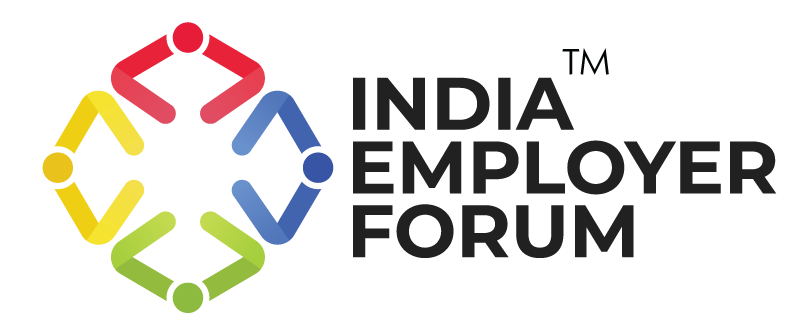World Telecommunication and Information Society Day (WTISD) is observed globally on May 17th, commemorating the establishment of the International Telecommunication Union (ITU) in 1865. More than just a symbolic date, this day brings attention to the power of digital connectivity and its role in building inclusive and sustainable societies. In 2025, the theme “Digital Innovation for Sustainable Development” resonates deeply with India—a country at the heart of a digital transformation powered by a dynamic telecom industry and a tech-savvy, youthful population.
India’s Evolving Telecom Landscape: A Catalyst for Change
India’s telecommunications sector has witnessed phenomenal growth, and the rollout of 5G technology in 2022 marked a new era in connectivity. By November 24, 2023, India had made significant progress in its 5G rollout by establishing 394,298 base stations across 738 districts and providing 5G connectivity to approximately 100 million subscribers. This rapid expansion positions India among the leading nations globally in terms of 5G deployment speed.
With major telecom players like Jio, Airtel, and BSNL investing heavily in network infrastructure, India continues to expand its digital capabilities. A key initiative driving India’s inclusive digital growth is BharatNet, the government’s ambitious program to provide broadband connectivity to over 600,000 villages. By extending the digital ecosystem into rural areas, BharatNet is not only enabling online education, e-commerce, and telemedicine but also creating a new wave of local jobs in connectivity infrastructure, equipment maintenance, and digital literacy training. The initiative is helping to reduce the rural-urban divide by enabling young people in remote areas to access the same opportunities as their urban counterparts.
Another critical driver of India’s digital rise is its unique Digital Public Infrastructure (DPI). Platforms such as Aadhaar, Unified Payments Interface (UPI), DigiLocker, CoWIN, and ONDC (Open Network for Digital Commerce) have fundamentally changed how citizens interact with public services and markets. These innovations not only streamline governance and facilitate financial inclusion, they also stimulate employment in fields like software development, fintech, cybersecurity, user support, and digital policy. India’s DPI is now being viewed as a global model, positioning Indian technologists and policymakers at the forefront of international digital diplomacy.
The introduction of 5G has opened up significant career opportunities across domains such as network operations, AI-driven system management, and real-time data analytics. Moreover, applications of 5G in smart manufacturing, healthcare, education, and mobility are transforming traditional industries and creating sector-specific jobs that require both technical and managerial skills.
Career Opportunities for the Indian Youth in the Telecom Industry
As digital technology becomes the backbone of economic activity, India’s youth must equip themselves with future-ready skills. A wide range of digital competencies—such as cloud computing, DevOps, cybersecurity, data science, AI/ML, and mobile application development—are now prerequisites to thrive in the new job market. National programs such as the Skill India Digital Platform and the Pradhan Mantri Kaushal Vikas Yojana (PMKVY) are addressing this need by offering modular training programs and industry-recognized certifications. Since its inception in 2015, the Pradhan Mantri Kaushal Vikas Yojana (PMKVY) has trained approximately 13.7 million candidates across various states. In the latest phase (PMKVY 4.0), as of December 2023, 342,500 candidates have completed their training, focusing on emerging technologies such as AI, robotics, IoT, and drones. Additionally, partnerships between government agencies and edtech companies are enhancing access to affordable, high-quality training.
The surge in digitalisation has led to the emergence of entirely new career opportunities. Roles such as telecom infrastructure engineers, IoT developers, cybersecurity analysts, and remote IT support professionals are in high demand. Furthermore, the growth of MSMEs and startups has created opportunities for digital marketers, content creators, e-commerce managers, and UI/UX designers. The increasing acceptance of remote work and the rise of the gig economy mean that many of these roles can now be performed from any location, including Tier 2 and Tier 3 cities and even rural areas. This has been phenomenal for the rise of these cities and will also help to provide relief to the burgeoning metropolitan cities and urban centers that seem to be splitting at the seams.
Digital innovation is also fueling the wave of entrepreneurship across the country. India’s startup ecosystem, home to over 100 unicorns, is witnessing the rise of micro-entrepreneurs who leverage mobile apps, social media platforms, and digital payment systems to create local businesses. From content creation on YouTube to selling handmade products via platforms like Meesho and Shopify, digital tools are empowering young Indians—especially women and rural youth—to become self-employed and economically independent. Programs such as Startup India and Atal Innovation Mission (AIM) provide essential resources like seed funding, mentorship, and incubation for aspiring entrepreneurs.
Addressing the Gaps: Digital Inclusion and Skill Alignment
Despite rapid progress, India still faces challenges in ensuring equitable access to digital tools and skills. Internet connectivity and digital literacy is still out of reach for certain sections of the population such as women, tribal populations, and persons with disabilities. To overcome these disparities, there must be a concerted effort to expand digital education in regional languages, improve the affordability of internet-enabled devices, and ensure that all segments of society can participate in the digital economy.
The BharatNet project aims to bridge the digital divide by providing high-speed internet access to rural areas. As of January 13, 2025, the initiative has connected 214,323 Gram Panchayats and laid 692,676 kilometers of optical fiber cable. Additionally, over 1.2 million Fiber-To-The-Home (FTTH) connections have been commissioned, and more than 104,000 Wi-Fi hotspots have been installed to ensure last-mile connectivity.
Another pressing issue is the gap between education and employment. Many graduates struggle to find jobs not because of a lack of openings, but due to a mismatch in academic training and industry needs. Bridging this gap will require stronger collaboration between educational institutions and the private sector to develop job-aligned curricula, along with more widespread access to internships, apprenticeships, and real-world digital projects. Regional career guidance programs can also play a critical role in helping youth discover emerging job paths and prepare accordingly.
A Digital Future for All
World Telecommunication Day is more than a celebration—it’s a powerful reminder of how digital connectivity can unlock human potential and drive sustainable development. In India, where nearly half the population is under the age of 25, (24% of India’s population is in the 0–14 age bracket, and 17% is in the 10–19 age range) the digital transformation presents a once-in-a-generation opportunity to empower youth, create inclusive employment, and foster innovation across all sectors.
To make the most of this opportunity, young Indians must embrace digital literacy, continuous learning, and a forward-looking mindset. Whether it’s launching a tech startup, managing 5G networks, supporting digital governance, or creating content for regional audiences, the future of work in India is undeniably tied to the country’s telecom and ICT ecosystem. With the right policies, platforms, and participation, India’s youth can not only benefit from the digital revolution—but lead it.






